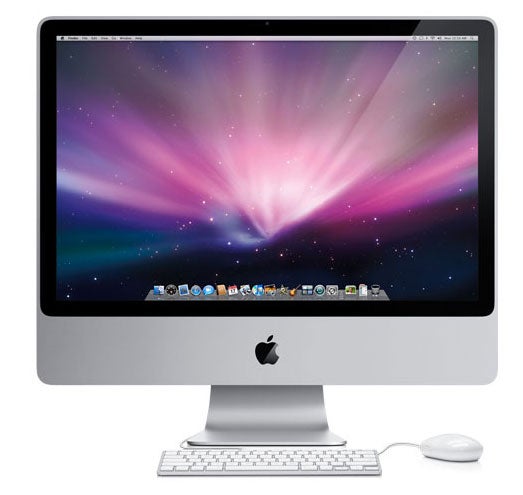The new iMac iWant

I've been saying for the last three years that something odd is going on at Apple.
OK, some of you may think there are a lot of odd things go on at Apple (and most other big companies, for that matter), but I'm talking about Apple's computers.
Already a few years ago the distinction between consumer Macs and professional Macs was getting harder to define. Publishing companies started putting in lots of iMacs instead of several Mac Pro towers.
The reasons were clear - iMacs took up less desk space, you got more workstations for the same money and, with G5 and then Intel chips inside, iMacs were powerful enough for most of the Mac operators in the firm. Once upon a time, iMacs were only given to writers and receptionists.
When Apple released a new range of MacBooks and MacBook Pros last year, lo and behold, they even looked the same. Both were made from a single piece of milled aluminium. But with proper video cards inside them, the little 13-inch MacBooks are not only super portable, but very capable with their dual Intel processors. Serious travellers could choose between a slick, svelte and very portable MacBook or a heaver, harder to carry but admittedly more powerful MacBook Pro. The choice had never been harder.
Apple had always created consumer Macs from plastic, and then white plastic from 2006. In 2001 Apple's professional laptop was changed to a Titanium case (in 2001) in the form of the PowerBook G4. In June 2003, Apple's tower for professionals (which had also been made from plastic) was changed from the G4 to the G5 processor. In conjunction the tower housing was changed to heavy-grade aluminium, the beginning of Apple's love affair with the light, tough metal. This was for strength, but also for cooling; the G5 was a notoriously hot-running chip, as Microsoft Xbox owners will know.
The G5's heat was one of the reasons Apple changed to the Intel chip family. To create a truly professional Mac laptop, for which a considerable desire had been expressed, the powerful G5 chip was just too hard to cool effectively.
Nobody wanted to tote a slick laptop with an air conditioning unit attached. Intel's chips were similarly powered, actually - but they ran cooler, making them much easier to design laptop cases for.
In a way, the fact that Apple worked with two chip families for a while (IBM's G4 and G5) made the distinction between the consumer and pro Macs obvious. But when Apple released the G5 iMac (August 2004), the consumer desktop had become a serious contender, capable of real processing.
Now, the latest Mac Pro towers have been redesigned. They really are the heavyweights, in every way, of Apple's line-up, and in situations where they're needed, operators appreciate the power, the hot-swappable drive bays and the expansion opportunities. But that group of users is smaller than it used to be.
A commenter on this site made a good case a few months back for an 'iMac Pro' - and I've been thinking about that a lot. Because I want one too. Yes please - a four-processor, big (24-inch) all-in-one iMac that is even more powerful than the year-old MacBook Pro (pre-unibody) I currently use, able to handle Logic, Final Cut and Adobe Premiere Pro with ease, without the need for desk reinforcement and a monitor bought to plug into it.
After all, the iMac is due a serious refresh, and WWDC is about to happen in San Francisco. The Inc normally releases pro hardware and software at WWDC but hey - Apple already put out faster, redesigned new Mac Pros this March.
So will we get new iMacs? The site sevenmac published rumours of four-core iMacs late last year, quoting the Economic Daily News which said Foxconn would be producing a new-design single-case iMac with a newer cooling system.
You'd need a new cooling system for quad core chips, you see. The magazine DigiTimes had already discovered that Apple (and Acer, Dell and HP) had agreed to use Intel's new desktop Quad Core chips in their next systems "in early 2009."
This new family of Core 2 Quad Processors requires 65W of power. The current iMacs only need 55W. An increase in power means an increase in heat output ... An increase in power would also help with Apple's new 'Snow Leopard' operating system, complete with its Grand Central feature designed to increase support on multi-core systems. Snow Leopard is almost sure to be released at WWDC (and maybe new iPhones).
So it kinda stacks up. NetworkWorld in the UK has discussed this idea too, in March this year when the new Pros were released.
But I must point out, this is all speculation. We'll find out in Phil Schiller's keynote at WWDC on June 8th.
That's just three weeks away.
This article originally appeared in the New Zealand Herald
Join our commenting forum
Join thought-provoking conversations, follow other Independent readers and see their replies
Comments